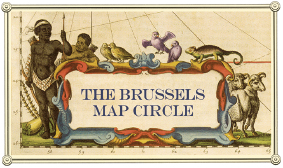The World on Paper: From Square to Sphericity Special Exhibition
–Hong Kong, China
Organisation: Hong Kong Maritime Museum
These maps and ancient books do not only record history; they also reflect the philosophies and cultures of the time. In this exhibition of maps and rare books, the Hong Kong Maritime Museum hopes to demonstrate the evolution of Chinese navigation and cartography, explore the changes in China’s world view and scientific knowledge, and explain cultural exchanges between China and foreign countries during the early modernisation period (19th to 20th centuries).
The exhibition is organised by the Hong Kong Maritime Museum, co-organised with HKUST Lee Shau Kee Library and the Library of Macau University of Science and Technology; China Resources Group as major sponsor and supported by the Home Affairs Bureau, Hong Kong Special Administrative Region. Mr Tam Kwong Lim, and Prof Fung Kam Wing, Board Directors of the Hong Kong Maritime Museum also serve as the guest curators of the exhibition.
The exhibition has four main sections: (1) The development of Chinese and Western navigation and cartography, (2) Traditional Chinese cartography, (3) The encounter of Chinese and Western cartography during the Ming and the Qing dynasties and (4) Mapmaking of China, particularly in the region of the Pearl River Delta and Hong Kong. Exhibits include around eighty rare maps and charts, and fifty books from the late Qing and early Republican eras, as well as many cartographic tools and instruments. In addition to the items of the organiser’s and co-organisers’collections, the exhibition also includes objects borrowed from the Hong Kong Science Museum, Fung Ping Shan Library, The University of Hong Kong Libraries, the Chinese University of Hong Kong Library, the and other private collections. Some of the exhibits are on display for the first time. Various institutions such as the Biblioteca Apostolica Vaticana, Vatican City, the Library of Congress, the Hunan Museum, the Gansu Antique Archaeology Institute,the Tokiwa Museum of Historical Materials,the UK Hydrographic Office Collection and the Hong Kong Marine Department had kindly provided their important electronic maps. Through these valuable pieces, visitors could not only gain a comprehensive understanding of the culture and history of Chinese cartography, but also admire the unique artistic flavour of these maps.
Various talks and visits are accompanying this exhibition.
More about this exhibition in the article of Stuart Heaver in the South China Morning Post.
